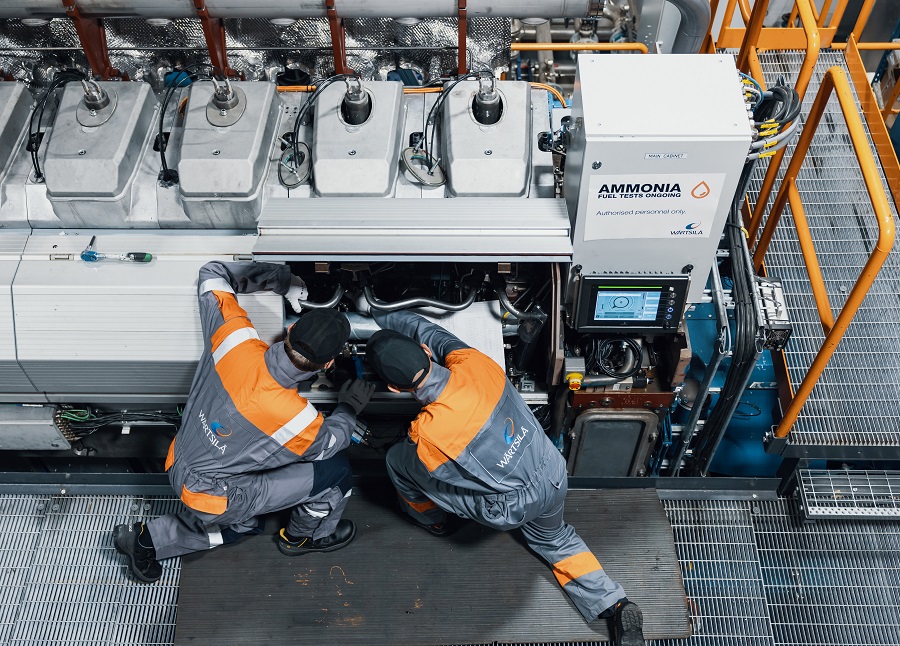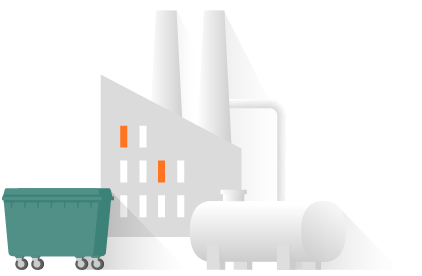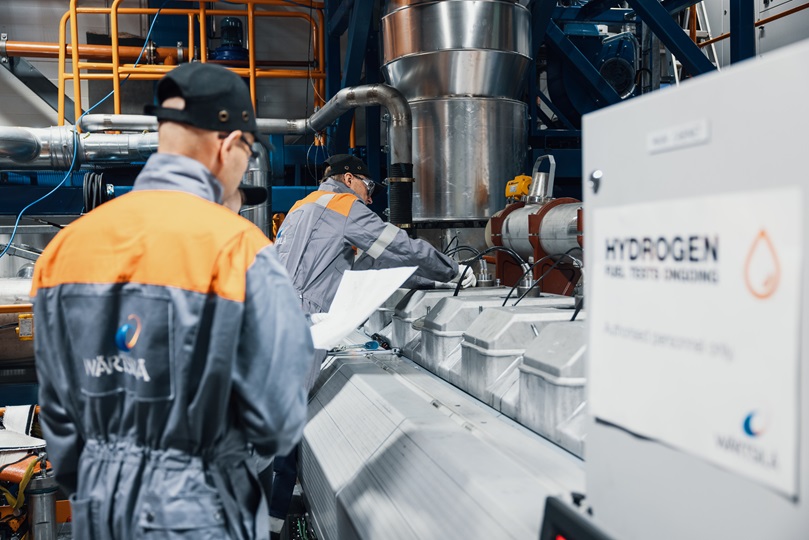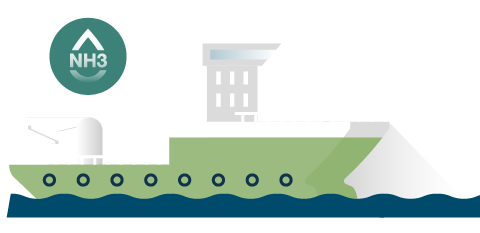
Sustainability and availability of future fuels
All fuels will emit greenhouse gases in their different processing stages including extraction, production, handling and transportation. These upstream emissions are related to, for example, how much energy is required in each step and whether this energy is from renewable sources. If the fuel contains carbon, its combustion will emit CO2, whereas carbon-free fuels have no direct CO2 emissions during combustion. As described above, it is not only about the exhaust when discussing global emissions; the whole value chain needs to be evaluated. If the production of fuel has captured CO2 or prevented CH4 leaks, the overall emissions of such fuels become carbon neutral or even negative.
The cost of transport and storage of a fuel will be an important factor of the total cost of the fuel and should be an integral part for power generation assets to consider. The cost and space requirements of fuel storage at a power plant will be determined by the volumetric energy density of the fuel and the storage conditions. All conventional fuels have high energy densities and heating values, which made them attractive initially for combustion. With sustainable fuels, and P2X fuels especially, the fuels need to be compressed or liquefied but even so more storage space needs to be reserved.

Although it seems that development today is focused on P2X fuels (hydrogen, ammonia and methanol), many alternative sustainable fuels such as bio/e-methane or liquid biofuels are promising and even more readily available for the energy sector. These fuels are similar in their chemical composition to fossil fuels and can therefore be used with current engine portfolios. These fuels can already today be used on their own or as blends with fossil fuels and are likely to play an important role in the coming 15 years before P2X fuels can be produced in the necessary volumes for the energy sector.

Case: Power to synthetic methane
Wärtsilä and Vantaa Energy Ltd., a Finnish energy company, have signed an agreement on a joint concept feasibility study for a Power-to-Gas (P2G) facility at Vantaa Energy’s waste-to-energy plant in the city of Vantaa.
The P2G facility will produce carbon-neutral synthetic biogas using carbon dioxide emissions and electricity generated at the waste-to-energy plant. The purpose of the joint project is to demonstrate the first industrial scale P2G plant (in Finland), to build knowhow on operational integration of various new technologies (carbon capture, electrolysis and methanation) and to define boundary conditions for feasibility.
Execution is planned to start in 2023 and, when in operation in 2025-26, the plant should be producing approximately 80 GWh synthetic methane either injected into the gas grid or liquefied or compressed for road transportation use.
The differences between sustainable fuels
All future fuel options have advantages and disadvantages, as outlined in the following table:
Emerging regulations and rules for sustainable fuels
Regulations and rules for sustainable fuels are being drafted and will
play a central role in how quickly the production and utilisation of
these fuels will ramp up. For example, in the EU the aim is to have
regulations in place so that both the production and use of sustainable
fuels can be viable technically and financially in a sustainable manner.
Key legislation in the EU for hydrogen production will be the renewable
energy directive (RED II and III), which targets high renewable fuel
shares especially in the mobility sector.

While many of the details in the EU taxonomy and other regulations are still to be solved, the EU is clearly pushing for the decarbonisation of energy systems. The challenge is to cover the transition period in order to reach 2050 net zero scenarios in time. Many of the details – such as calculation methods and piloting/investment incentives – still need to be solved. This leaves some uncertainty on a national level over how power plant projects can be planned and financed. What is clear is that everybody agrees that decarbonisation is needed, and the regulation/financing rules will push for this change.
Case: Creating an engine that runs on ammonia
Wärtsilä and Norwegian ship owner Eidesvik Offshore ASA signed a cooperation agreement aimed at converting an offshore supply vessel to operate with an ammonia-fuelled combustion engine with required fuel supply, safety system and exhaust aftertreatment. This project will be the first of its kind in the world and is targeted for completion by the end of 2023.
The offshore supply vessel considered for a retrofit currently has Wärtsilä dual-fuel engines operating primarily with LNG fuel. The conversion will allow the vessel to operate with a 70% ammonia blend. The ultimate goal is to achieve operation with 100% ammonia and with a minimal ignition fuel requirement.


